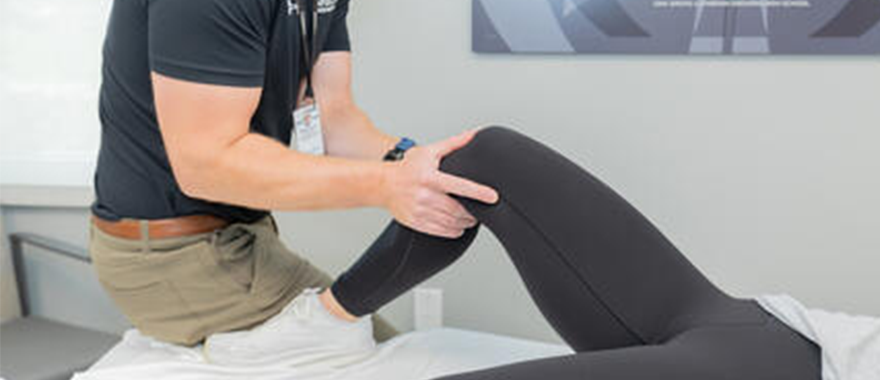How to recover from and prevent overuse injuries

Posted: February 14, 2025
With more options than ever to play sports year-round, it is not uncommon for kids and adults to experience overuse injuries.
Amanda Leavy, a senior physical therapist with Sanford Sports Performance, explains how overuse injuries occur and what athletes can do to recover and prevent pain.
What are overuse injuries and how do they occur?
Overuse injuries happen when tissue is stressed beyond its tolerance, preventing it from recovering properly. These injuries are often associated with high-volume or repetitive activities over time.
What factors put athletes at risk for overuse injuries?
- Rapid increases in activity (e.g., doing too much too soon)
- Starting a new exercise routine
- Fear of movement or activity (also known as kinesiophobia)
- Anxiety and mental stress
- General physical or emotional strain
Do certain sports put athletes at greater risk?
All sports come with risks. However, the likelihood of overuse injuries depends on the individual’s physical condition, movement patterns and training habits.
Overuse injuries that are commonly seen in certain sports include:
- Running: Achilles tendinitis, plantar fasciitis, patellar tendinitis and iliotibial band syndrome
- Baseball: Elbow tendinitis
- Swimming: Shoulder pain
- Hockey: Hip flexor pain, low back pain and anterior hip pain
- Basketball: Patellar tendinitis
Describe some of these common overuse injuries in more detail.
- Achilles tendinitis: This condition involves pain in the Achilles tendon, often felt during or after activity and first thing in the morning when stepping out of bed.
- Plantar fasciitis: This involves pain in the bottom of the foot, particularly upon waking up and taking the first steps of the day.
- Elbow tendinitis: Addressing this condition requires a comprehensive evaluation of upper-body mechanics to identify and implement more efficient movement patterns, ultimately reducing pain and preventing reinjury.
How do physical therapists help athletes recover from overuse injuries?
- Modalities: Techniques such as instrument-assisted soft tissue mobilization, cupping and dry needling are used to provide pain relief, promote tissue remodeling, and enhance joint mobility and muscle performance.
- Movement assessment: A detailed evaluation identifies areas of stress and inefficiencies. The goal is to mitigate strain on affected tissues and improve overall movement efficiency.
- Progressive rehabilitation: A tailored program gradually reintroduces activities, starting with tolerable doses and advancing as tissues adapt. This approach not only aids recovery but also prevents recurrence of the injury.
What exercises can athletes do at home to relieve pain from overuse injuries?
They can modify activities by reducing repetitions, decreasing the load or adjusting both as needed. Athletes can also utilize recovery tools like foam rolling and massage guns, which can help alleviate pain and improve blood flow to the affected area.
How can athletes prevent overuse injuries?
Building a resilient body is key. Recommendations include:
- Consistent strength training: Develop strength through youth and adulthood with pre-season, in-season and post-season programming guided by a coach or professional.
- Healthy sleep habits: Prioritize restorative sleep.
- Stay hydrated: Include electrolytes for optimal performance.
- Balanced nutrition: Consume a high-protein diet to support recovery and tissue health.
- Daily activity: Aim for at least 10,000 steps per day.
- Consult professionals: Seek advice when trying new training regimens or footwear. Strength and mobility are essential for optimizing movement and reducing the risk of injuries.
Overuse injury prevention and recovery are ongoing processes. By consistently addressing the factors above, athletes can build a robust and adaptable body capable of handling the demands of their sport or activity.






